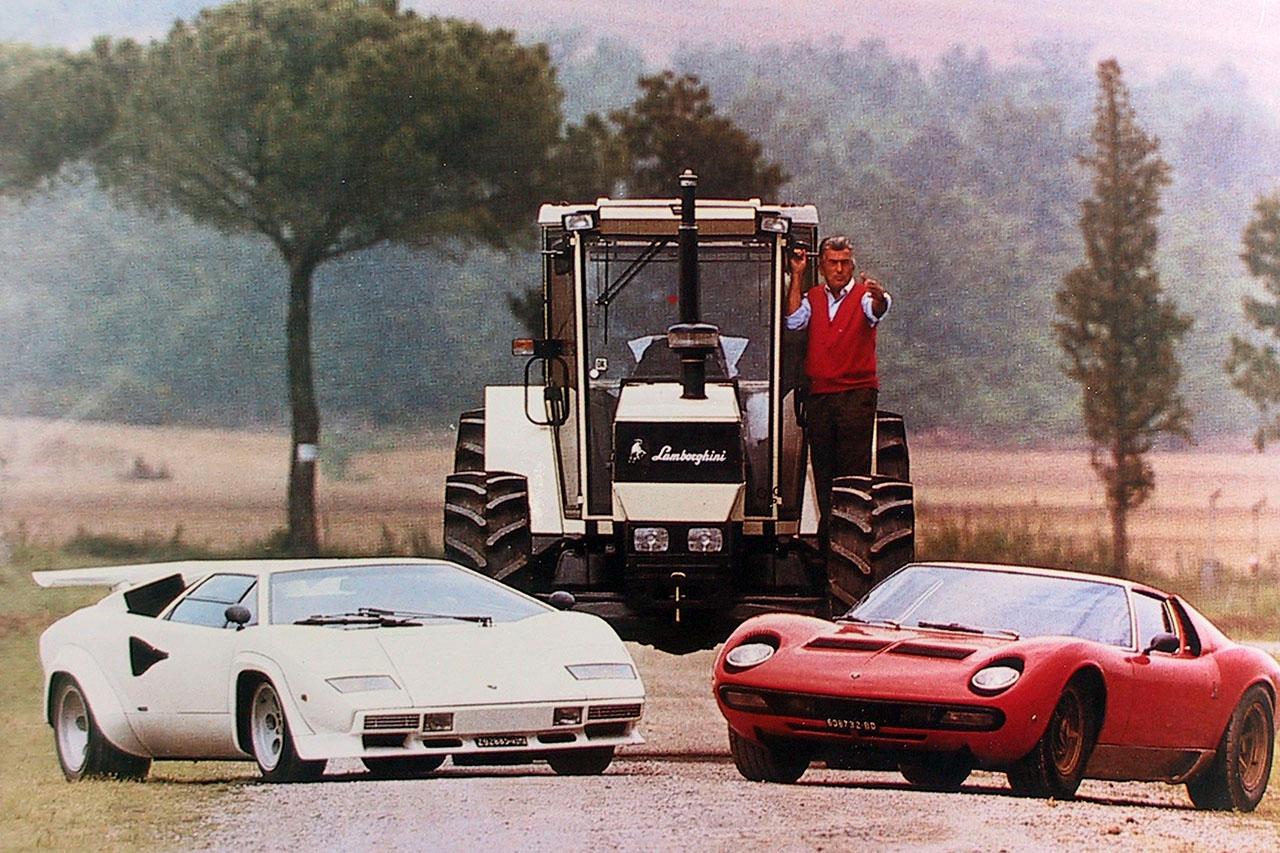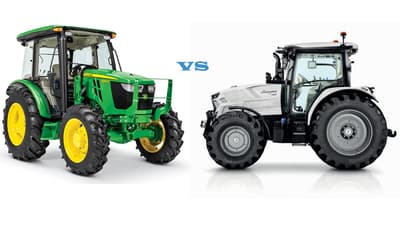Nowadays, most of us know Lamborghini as the Italian automotive marque that makes blisteringly fast cars. But there is a lot more to Automobili Lamborghini and its founder Ferruccio Lamborghini than what comes to light.
Ferruccio actually made tractors before he ventured into the business of manufacturing sportscars. The Italian had a love for machines since his childhood, which initially led him to repair old tractors and finally to produce brand-new ones.
The story behind his rise from a farmer’s son to a business tycoon is something you wouldn’t want to miss.
Lamborghini Tractor History
Ferruccio Lamborghini loved machines since his childhood. He would often be found tinkering with his father’s old tractor, trying to learn more about the vehicle and its functions. But, as a child, he could not make much sense of it all.
The Italian knew he had to go out of his comfort zone and from his hometown to gain more knowledge. So, he moved to Bologna, attended a technical school, and began learning everything he could about automobiles.
When World War 2 broke out in 1939, Ferruccio enlisted in the Italian Air Force’s transportation department and continued putting his knowledge to the test. Unfortunately, when the Italian became a prisoner of war, the British sent him to work in their military’s motoring department.
Through it all, Ferruccio Lamborghini got firsthand knowledge and exposure working on all kinds of vehicles. He learned the art of repairing an automobile and honed his mechanical skills.
The experience and knowledge came to good use once the Italians came back home from war. He used what he had learned in the field and started a company building reliable tractors.
Ferruccio gave life to Lamborghini Trattori in 1948 and began building tractors almost immediately in his small factory.
The initial stages weren’t easy since Ferruccio had no huge investment or help to kickstart his manufacturing operation. He initially had to scavenge for parts and collect discarded war materials and vehicle scrap parts to support his business venture.
If that wasn’t tough on him already, Ferruccio also had to compete and beat the best in the business at the time: Fiat Trattori and Landini.
The tractor business, which Ferruccio started in an old barn, went from being small-scale to large-scale in 1949. He built a completely new factory in Cento and founded Lamborghini Trattori SpA. At that time, they built just one tractor each day with a rather small group of employees. But things only got better, and by 1958 Lamborghini Trattori SpA had built 1500 tractors a year.
Lamborghini tractors were considered to be among the very best; in the beginning, Ferruccio even organized tractor-pulling contests between his machines and those belonging to nearby farmers just to show that his tractor was the most powerful one. The Lamborghini tractors were very reliable, and they were built in very high quality, mainly because over 80 percent of the parts were made inside the factory at Cento, so Ferruccio could assure himself of the best possible quality.
Soon, Lamborghini tractors became popular as symbols of modern technology and innovation, leaving the likes of Fiat and Landini behind.
In 1969 production went up to 5000 units a year, which caused Ferruccio to start thinking about moving into even larger premises again. He moved the factory in 1971, at that time, the Lamborghini Trattori SpA was the third best-selling tractor manufacturer on the Italian market. But in 1972, after a fatal cancellation of an important order, Ferruccio lost confidence in his tractor business and sold his company to Same Co of Treviglio, but production still continued, and by 1979, the former Lamborghini factory produced some 10,000 tractors a year, from which 26 percent was exported all over the world while 8 percent remained in Italy.
Does Lamborghini Still Make Tractors?
Lamborghini still makes tractors even after 75 years of being in existence! Although the brand retains its name and logo, the ownership is in the hands of the SDF Group. As such, the tractor company and automobile division are no longer owned by the same organization.
Lamborghini Tractor Models
Lamborghini Trattori makes tractors for various applications. Their tractors are tailor-made for open field operations, vineyards, and orchards. You can also get Crawlers and Mini tractors in their roster. It has been that way for most of the company’s history. Lamborghini has been more or less on top of their game, thanks to the wonderful model generations it introduced over time.
Let’s take a deeper look at the generations of the past and present.
Carioca (1948) – First Lamborghini Tractor
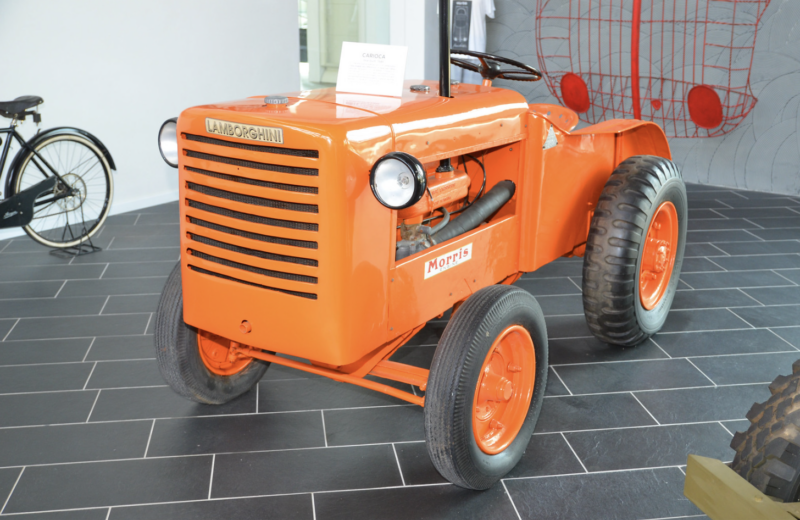
The first ever Lamborghini tractor was called the Carioca, and very little of it was purely built by Ferruccio. The Italians had to loan almost everything from vehicles and machines left over after the Second World War. He used the services of ARAR – a firm owned by the Italian government that sold old military equipment – to source the engine and other vital parts. Afterward, Ferruccio modified the parts to fit his tractor and made a basic chassis to fit it all in one piece. It would be fair to say that Ferruccio assembled a tractor and badged it as one made by Lamborghini.
Luckily, the Carioca tractors were a success, and Ferruccio Lamborghini received numerous orders from farmers all across Italy. As a result, he looked to expand and try making his very own tractor.
L33 (1951)
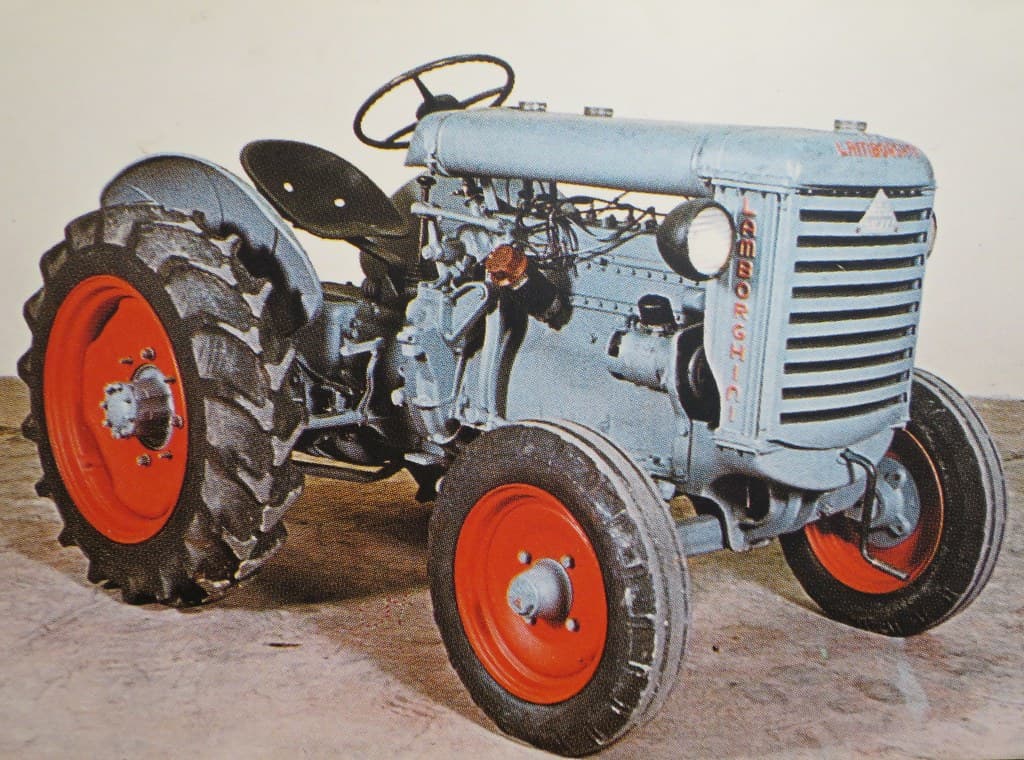
The first production tractor entirely built by Lamborghini was the ‘’L 33’’, which came out in 1951. Only the engine was outsourced and taken from the British automotive company – Morris.
Ferruccio had a ton of experience working on Morris’ engines as a prisoner of war. He had found a way to start the tractors with much more ease by using an interesting piece of equipment.
The Italian attached a fuel atomizer to the 3,500 cc in-line 6-cylinder Morris engine, allowing it to start on petrol and later convert to diesel.
The technology was revolutionary, and it further boosted Lamborghini’s sales. As a result, the brand transformed from a small-scale manufacturer to industry-level capabilities within a decade.
The Bank of Cento helped him in this endeavor by approving a 1,000,000 Lira loan for Ferruccio’s company. He used this money to buy around 1,000 Morris engines to use in his tractors and hire more labor to offset the increasing demand.
It was during this time that Ferruccio started the Lamborghini Trattori S.p.A and bought a large piece of land to officially industrial status.
DL 30 (1952)
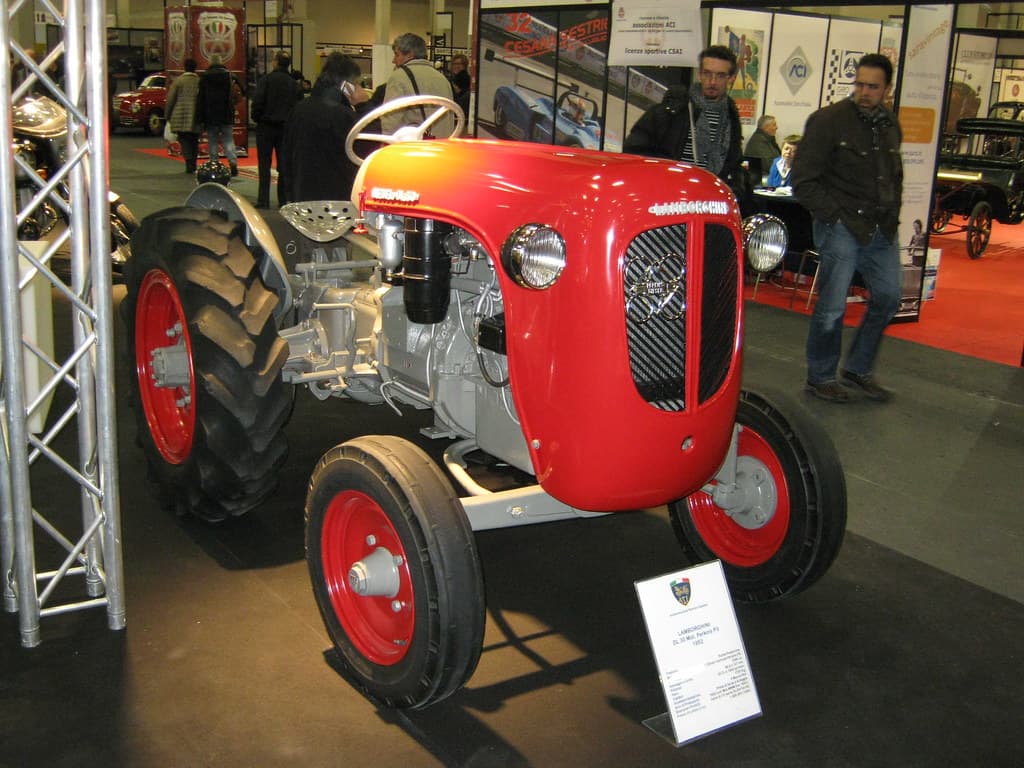
Once Ferruccio had a proper factory, he could focus on making better tractors for his customers. In 1952, the Italian produced the DL 30 and used the Mercedes DW415 MWM Diesel engine to power the new model.
Ferruccio had to move away from Morris engines as they were expensive to import and very limited in supply. The Mercedes engines proved profitable and they soon became the staple for all of Lamborghini’s tractors for the next few years.
DL 25 C (1955)
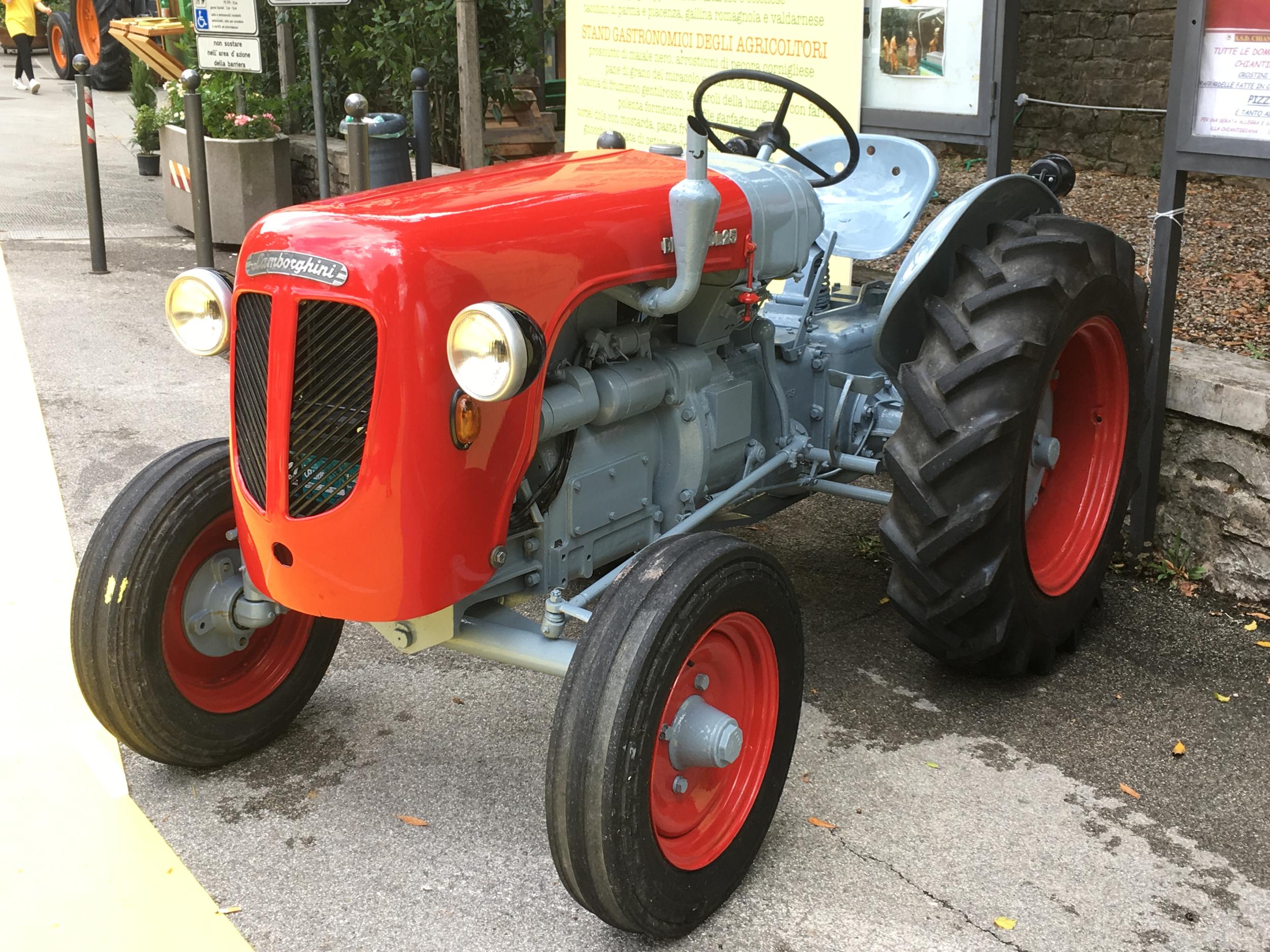
In 1955, Lamborghini Trattori made their first Crawler specification tractor. It was a facelift, in terms of design. The front was smoother and better looking. Plus, there were tracks instead of conventional wheels.
Moreover, customers had the option to choose between the Mercedes MWM Diesel engine and Lamborghini’s very own prototype engine. Ferruccio had worked hard to start making his very own engines and he succeeded in that venture in 1955 by establishing a professional relationship with Motorenwerken Mannheim.
Lamborghinetta (1958)
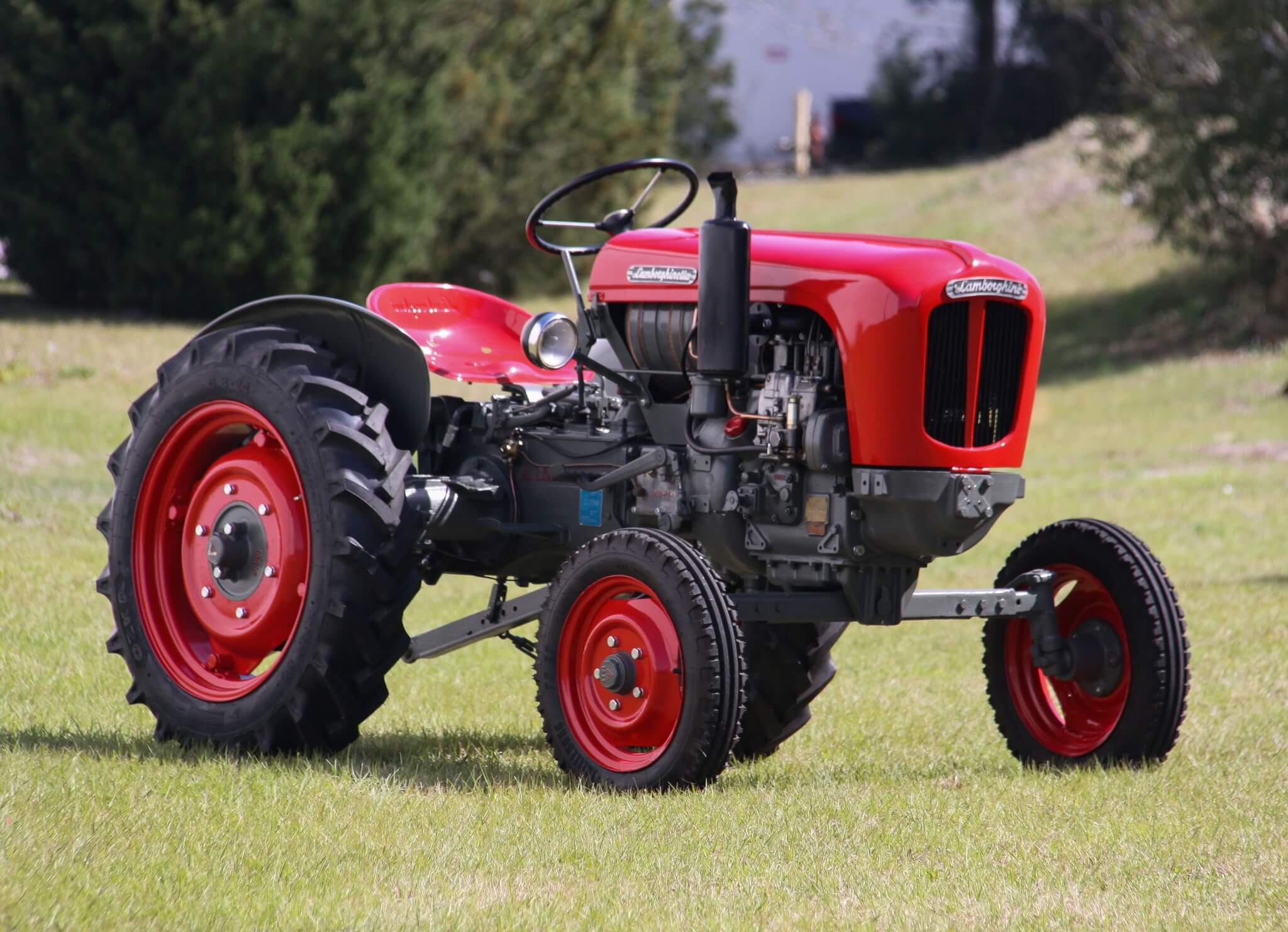
The Lamborghinetta was truly the first tractor, the company produced from scratch. Everything from the chassis to the engine and design was done in-house. It was a big achievement for Ferruccio as he expanded his operations and important people entered the list of patrons.
Interestingly, the tractor didn’t have headlights. Perhaps, Ferruccio only wanted this vehicle to be used only during the daylight!
2R DT (1962)
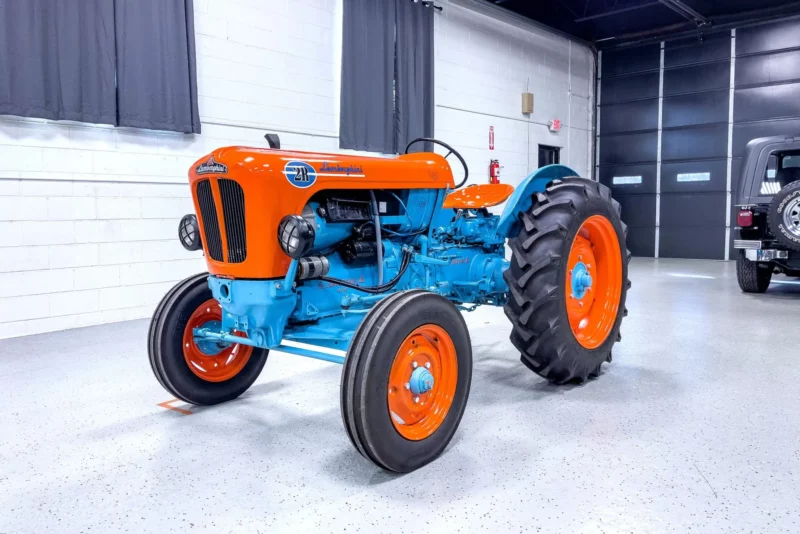
By 1962, Lamborghini Trattori’s business was booming and the demand for tractors was increasing multiple-fold. As a result, Ferruccio started to employ more people and at the same time introduced the air-cooled 2R DT model in the market.
The new tractor had a four-wheel drive option and a highly capable engine to provide power.
R 230 (1966)
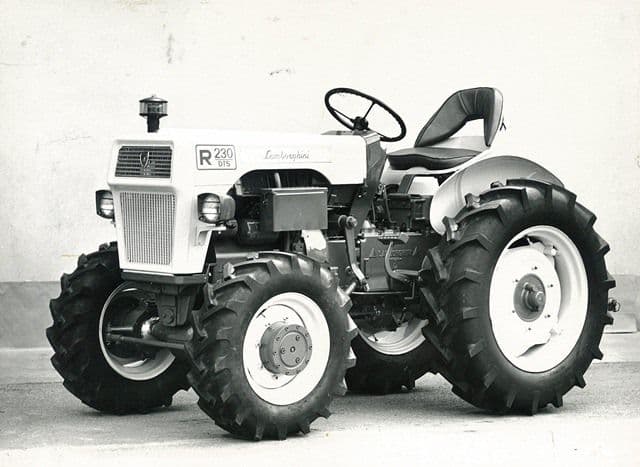
The R 230 had a refreshed design and more power than its predecessor. Lamborghini added a new grill design at the front, added a synchromesh transmission for two reverse speeds and diff lock capability, and a powerful 1.5-liter diesel engine. The new specifications made the R 230 the people’s favorite almost instantly.
R 480 (1968)
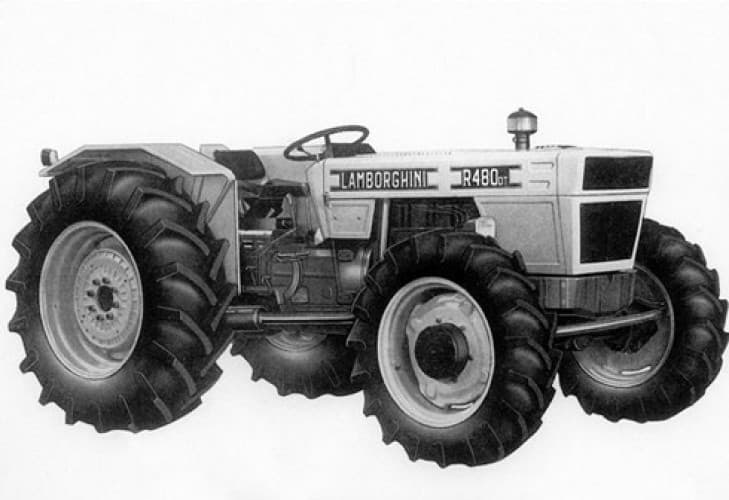
The R 480 was one of the last tractors made under Ferruccio’s supervision. The Italian saw more potential in the motorsport side of things and decided to sell the tractor business to the SAME group in 1971. But he made no compromises in the R 480. The tractor got a sleeker and more modern design, and to top things off a powerful engine.
R 684 DT F (1980)
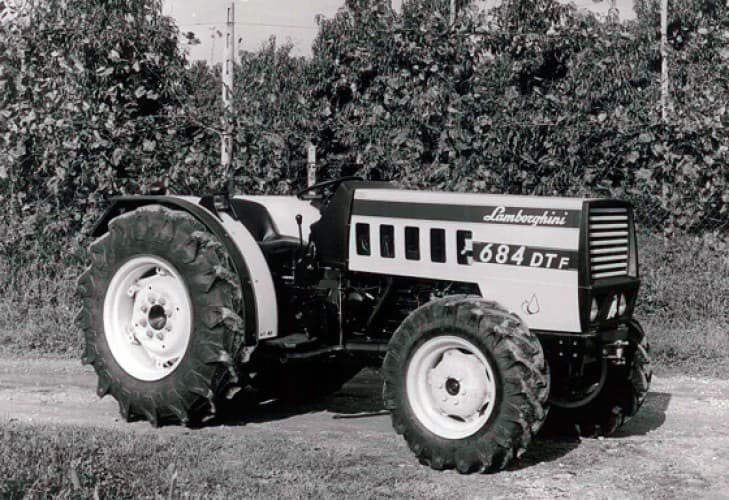
This new tractor had a radical design change, with a bigger engine cover, new grille design and repositioning of the headlights. But together with all that, the new Lamborghini management maintained the well-known reliability and capability these tractors were known for around the globe.
1306 DT (1983)
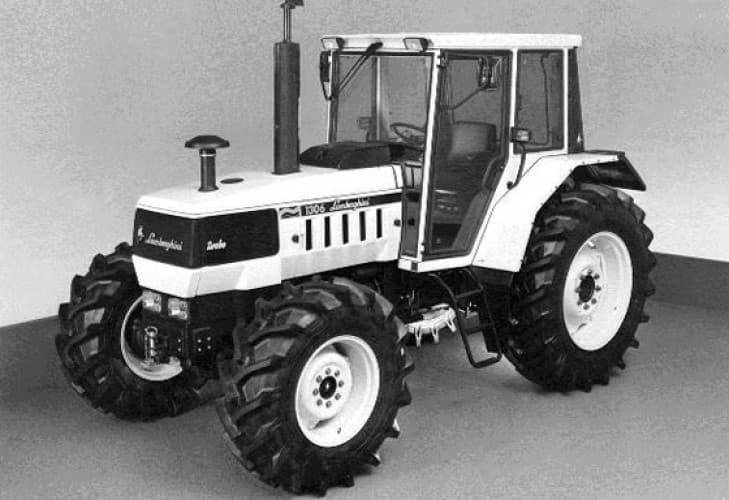
The new generation models got a facelift, with water-cooled engines coming into the mix. The design change meant that the Lamborghini tractors started to become more practical and good-looking.
135 Formula (1989)
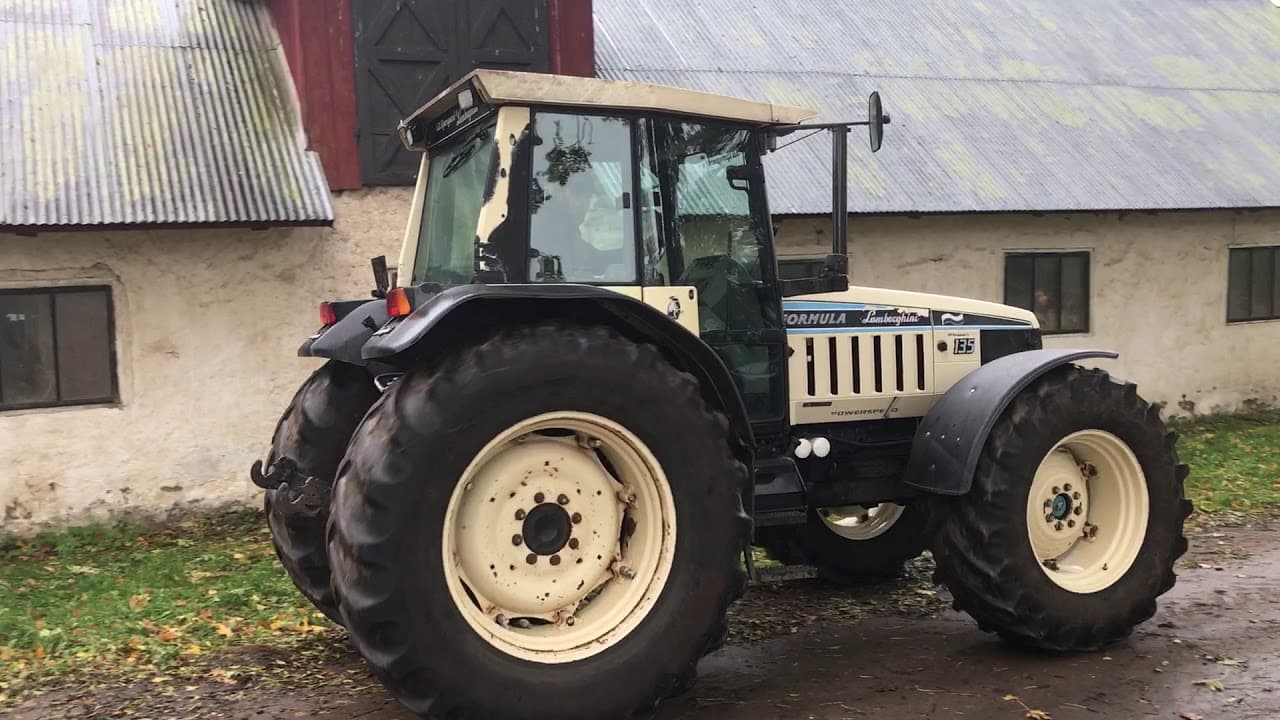
A few modern equipment and technologies started to make their way into the 125 Formula series tractors. Lamborghini designed these tractors with larger and taller cabins to accommodate big or small individuals. But that’s not all, the company also introduced electronic fuel injection and electronic tractor controls. In other words, it was the first time a Lamborghini tractor got an ECU.
Runner Series (1993)
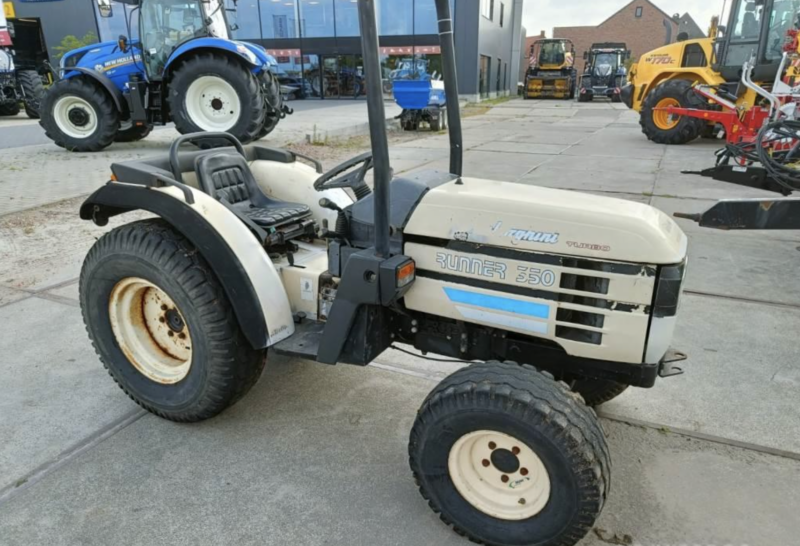
With the introduction of the Runner series, Lamborghini started to make more Mini tractors to supply small-scale farmers. The RX-100 mini tractors became popular with farmers across Europe, owing to their sleek design and otherworldly capabilities.
RF Series (2007)
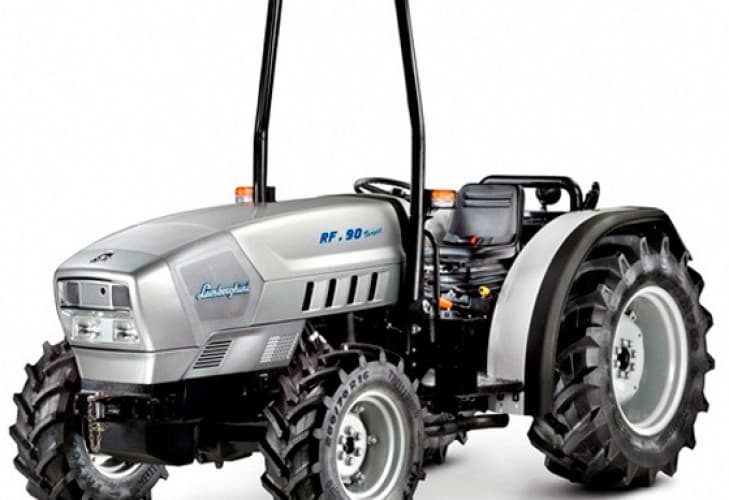
The 21st-century tractors were more stylish and ergonomic than their predecessors. The RF series tractors were living proof of that concept. Not only that but the RF models were made for multipurpose applications. So, they were efficient in fields, vineyards, and orchards.
CF Series (2010)
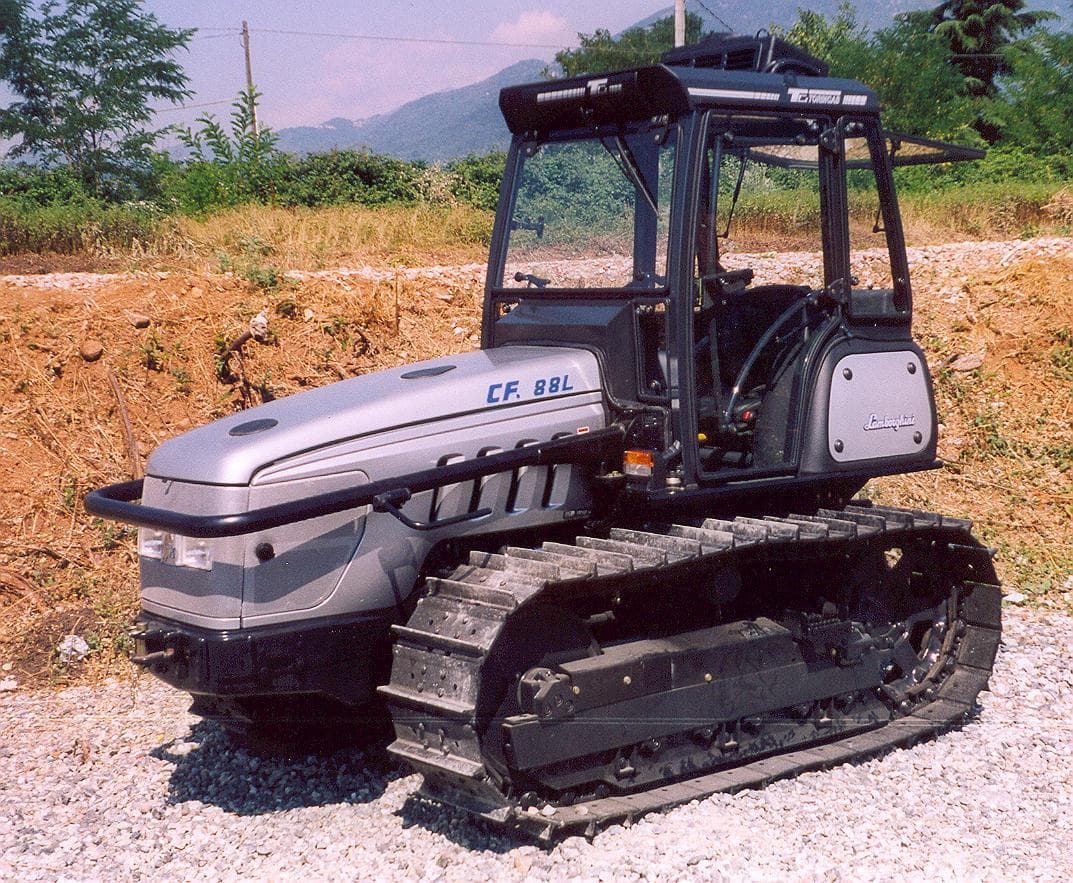
Crawlers made a return to the Lamborghini roster in 2010 under the CF Series badging. These small tractors were practical, agile, and the best at small-scale work. In other words, perfect for everyday rudimentary work around the farm, and also for picking frits in an orchard.
Nitro Series (2013)
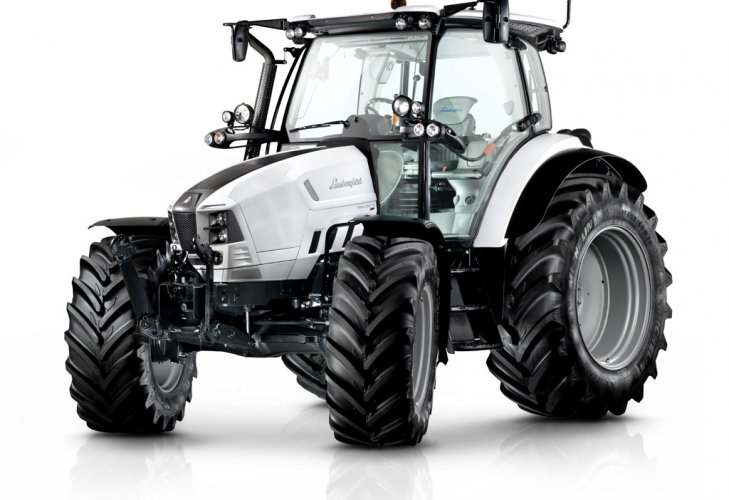
The latest generation of Lamborghini tractors brought a ton of new upgrades to woo fans. The vehicle had a taller cabin, more power, projector headlights, an ergonomic design, modern controls, and an attractive design. With this tractor, Lamborghini also reverted back to the black and white traditional cols of Lamborghini Trattori.
The tractor also won the 2014 RedDot design award and the Golden Tractor for Design award in 2014.
Currently, the brand sells 26 different tractors. The current model names are Mach, Spark, Spire, Strike, Crono, and Sprint. Each model has its specification and specialty, but they are all meant to be incredibly user-friendly, comfortable, sturdy, and reliable. You can view their specifications in the tables below:
| Model Name | Mach VRT | Spark VRT | Spark | Spark R | Strike | Spire VRT | Spire |
| Engine Summary | Deutz 6.1 Stage V | Deutz TCD | Deutz TCD Stage V | FARMotion 45 Stage V | FARMotion 35 or 45 Stage V | FARMotion 45 Stage V | FARMotion 45 Stage V |
| Lifting Capacity (kg) | 10,000 | 10,000 | 6200 – 9700 | 5410 | 3600/4525 – 4855/5410 | 4310 | 3000 |
| Cylinders | 6 Cylinders | 6 Cylinders | 4 or 6 Cylinders | 4 Cylinders | 3 or 4 Cylinders | 4 Cylinders | 4 Cylinders |
| Displacement | 6057cc | 6057cc | 4038cc or 6057cc | 3,849 cc | 2887cc – 3849cc | 3849 cc | 3,849 cc |
| Minimum Width | 2550 | 2350 | 2285 | 2209 | 2060 | 1745 | 1800 |
| Weight | 181.3/247 | 10325 | 7080 – 8600 | 4500 | 3800 – 4350 | 4000 | 3275 – 3875 |
| Power (hp/kW) | 1072 | 169.1/230 | 106/144 – 166/226 | 88/120 – 100/136 | 70/95 – 93/126 | 70/95 – 93/126 | 70/95 – 78/105 |
| Torque | 1072 | 970 | 663 – 889 | 517 – 570 | 389 – 517 | 389 – 472 | 389 – 433 |
| Model Name | Spire Trend | Crono | Spire Target | Spire F VRT | Spire S/V VRT | Spire F | Spire S/V |
| Engine Summary | FARMotion 35 Stage V | FARMotion 35 Stage V | FARMotion Stage III B | FARMotion 35 Stage V | FARMotion 35 Stage V | FARMotion 35 or 45 Stage V | FARMotion 35 or 45 Stage V |
| Lifting Capacity (kg) | 2500/3500 | 2500/3500 | 2650/3600 | 3800 | 2600 | 3130 – 3940 | 2600 |
| Cylinders | 3 Cylinders | 3 Cylinders | 3 or 4 Cylinders | 3 Cylinders | 3 Cylinders | 3 or 4 Cylinders | 3 or 4 Cylinders |
| Displacement | 2887 cc | 2887 cc | 2887cc – 3849cc | 2887 cc | 2887cc | 2887 cc – 3849 cc | 2887 cc – 3849 cc |
| Minimum Width | 1882 | 1839 | 1940 – 2005 | 1544 – 1671 | 1267 – 1517 | 1441 – 1671 | 1166 – 1269 |
| Weight | 3250 | 2750/3050 | 3200 – 3300 | 3290 – 4105 | 3265 – 3920 | 3290 – 3880 | 3290 – 3880 |
| Power (hp/kW) | 48.9/66 – 75/102 | 48.9/66 – 75/102 | 75/55.4 – 84/61.6 | 67/91 – 93/126 | 67/91 – 93/126 | 67/91 – 85/116 | 67/91 – 85/116 |
| Torque | 297 – 417 | 297 – 417 | 341 – 354 | 372 – 472 | 372 – 472 | 372 – 472 | 372 – 472 |
| Model Name | Spire F Platform | Spire S/V Target | Spire F Target | Spire F Trend | Sprint |
| Engine Summary | FARMotion 35 or 45 Stage V | FARMotion 35 Stage V | FARMotion 35 Stage V | FARMotion 35 Stage V | FARMotion 45 Stage V |
| Lifting Capacity (kg) | 3130 – 3940 | 2800 | 2800 | 2700 – 3050 | 1200 |
| Cylinders | 3 or 4 Cylinders | 3 Cylinders | 3 Cylinders | 3 Cylinders | 4 Cylinders |
| Displacement | 2887 cc – 3849 cc | 2887 cc | 2887 cc | 2887 cc | 2216 cc |
| Minimum Width | 1441 – 1671 | 1441 | 1441 | 1450 – 1642 | 1389 – 1399 |
| Weight | 3290 – 3880 | 2995 | 2995 | 2189 | 181 – 1885 |
| Power (hp/kW) | 67/91 – 85/116 | 55.8/76 | 55.8/76 | 48.9/66 – 55.8/76 | 51/38 – 59/43.5 |
| Torque | 372 – 472 | 341 | 341 | 297 – 341 | 145 – 170 |
Lamborghini Tractor Price
Lamborghini tractors are expensive but built to last. So, when you spend your money, you know it’s not going to waste. A used Lamborghini tractor has a starting price of $40,000 or more. If you go for the brand-new option, the cost can shoot up to and sometimes exceed $100,000.
Conclusion
Lamborghini tractors and their legacy lives on even after 75 years, thanks to the initial dedication of Ferruccio Lamborghini and the hard work of the people who followed in his footsteps. Through its ups and downs, the company has survived, and it strives to become a better version of what the founder imagined.
Interestingly, it should be much easier to find a Lamborghini tractor than a Lamborghini car because the total production of Automobili Lamborghini is nowhere near 10,000 units until lately, with production runs of the Murciélago and the Gallardo well into the thousands each!
If you would like more information on the current Lamborghini tractors available, take a look at the official Lamborghini tractor site found at the next URL: Lamborghini-tractors.com

